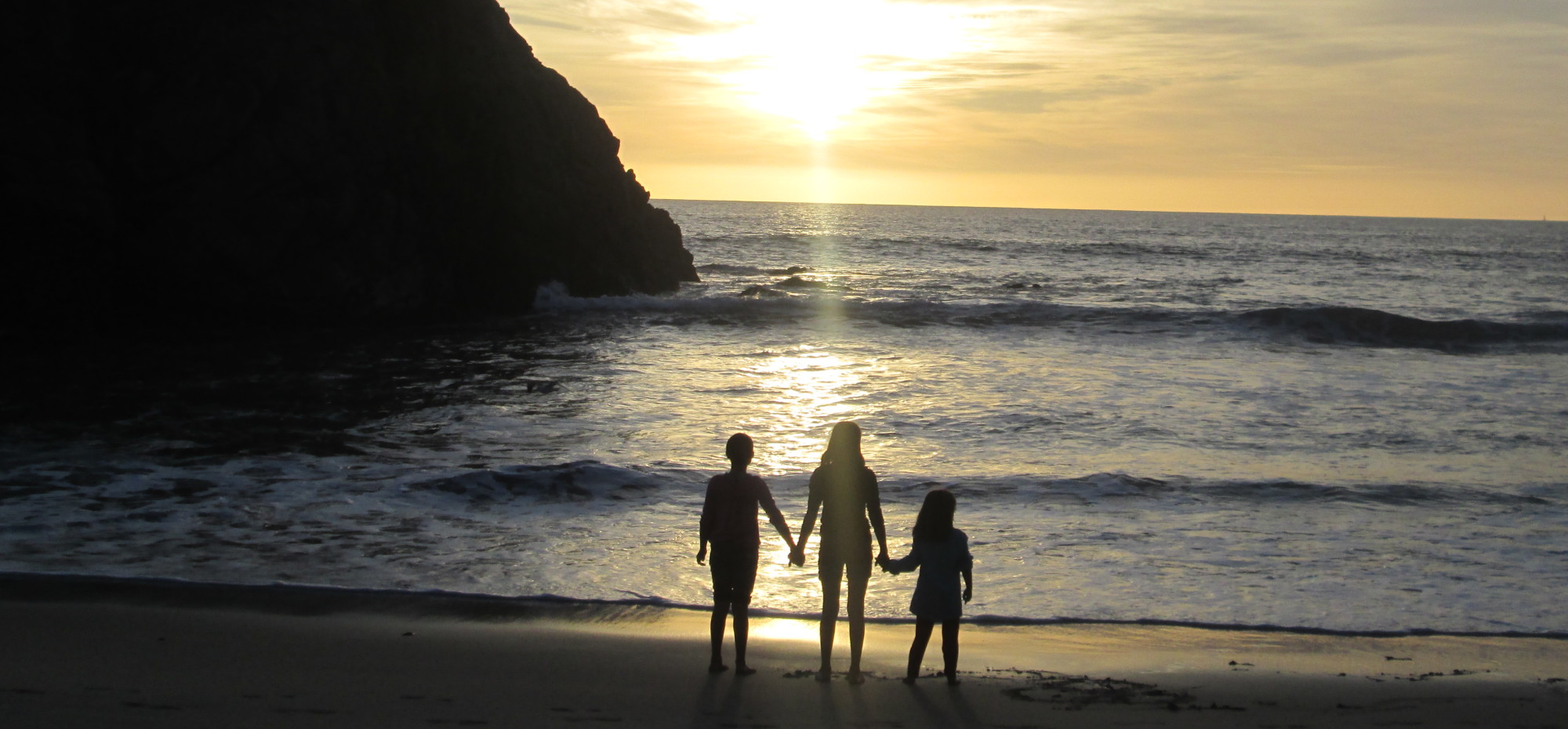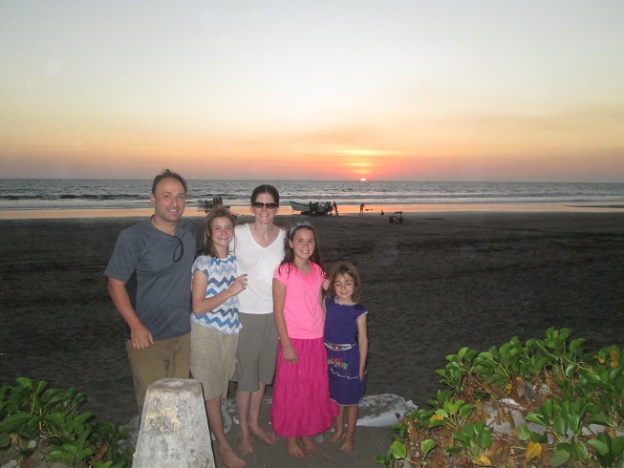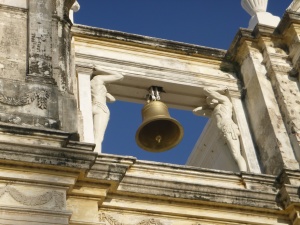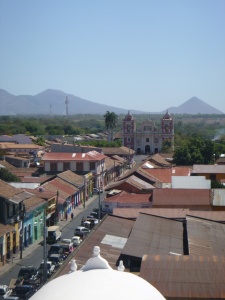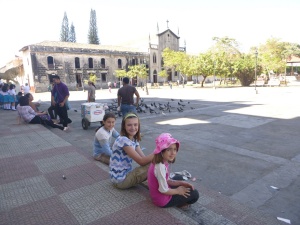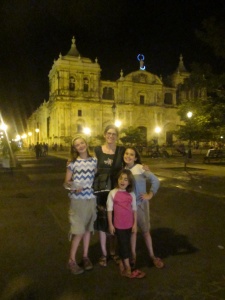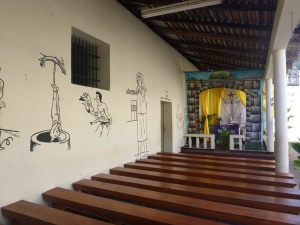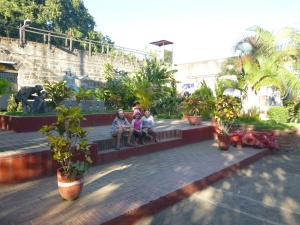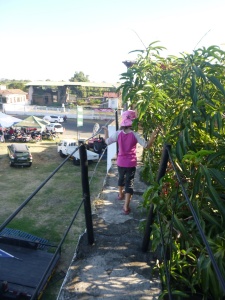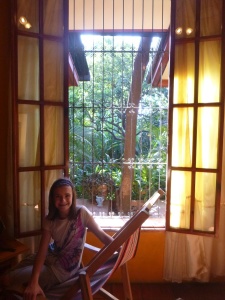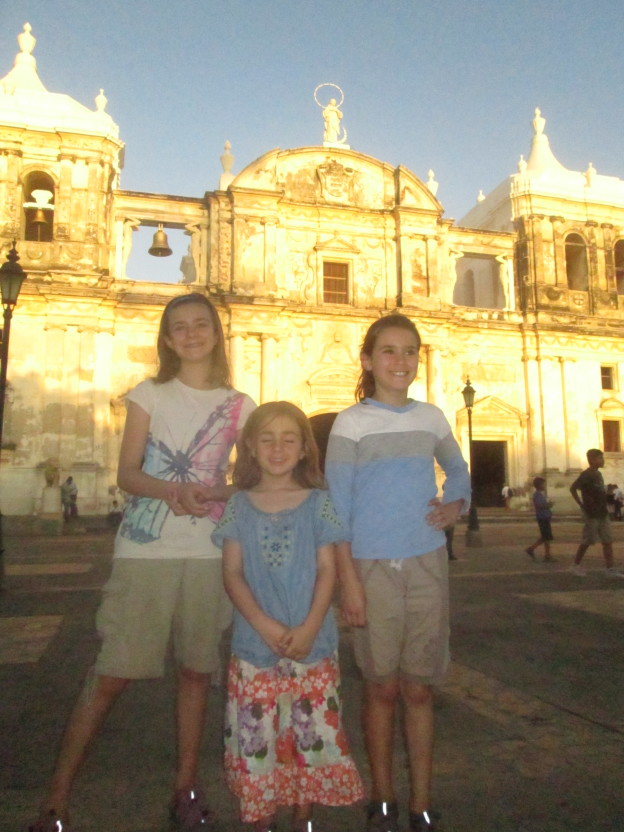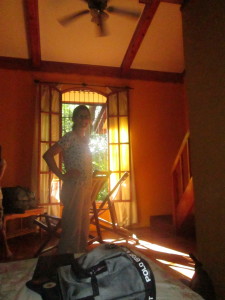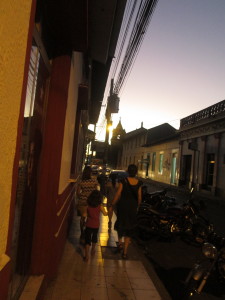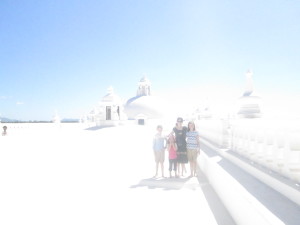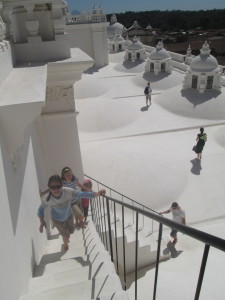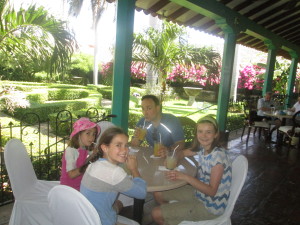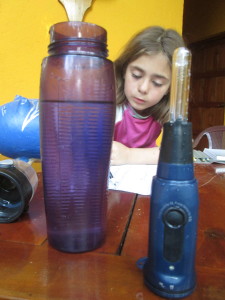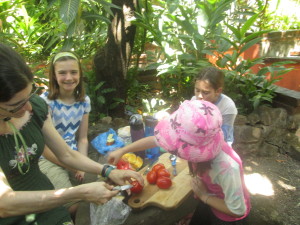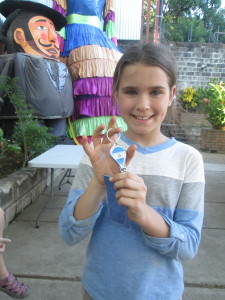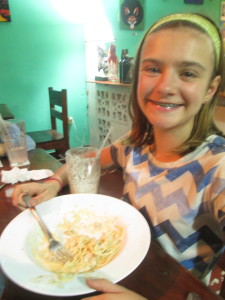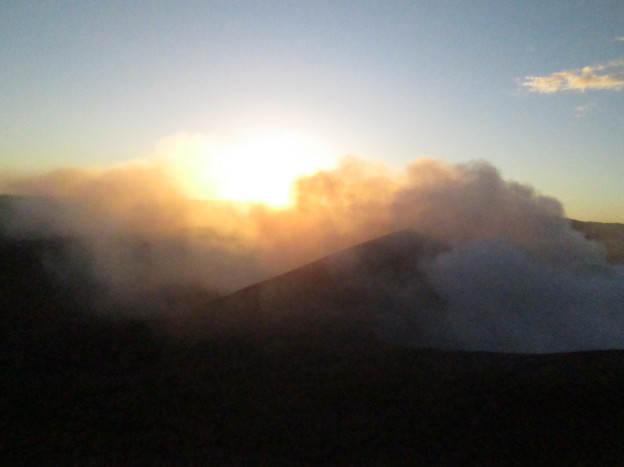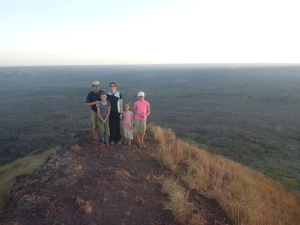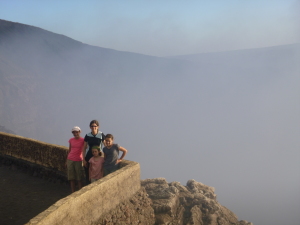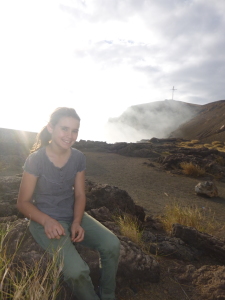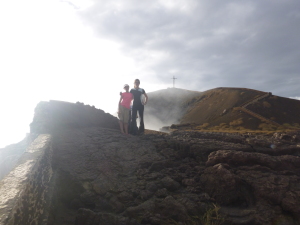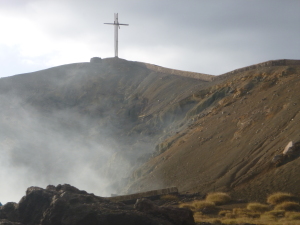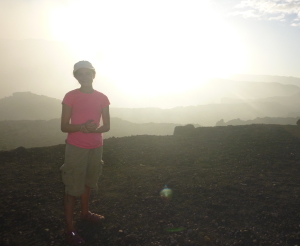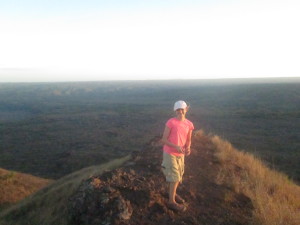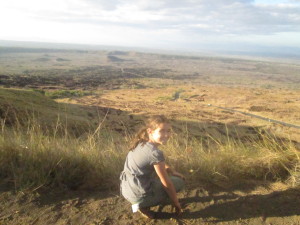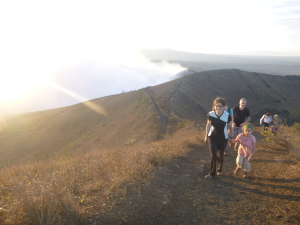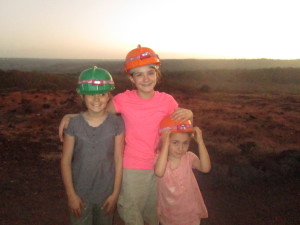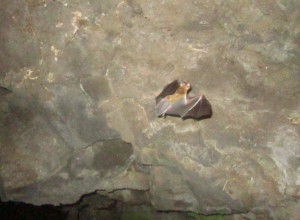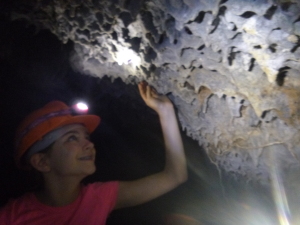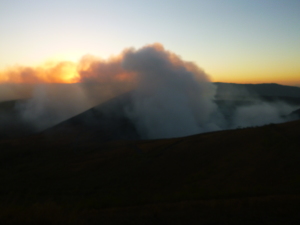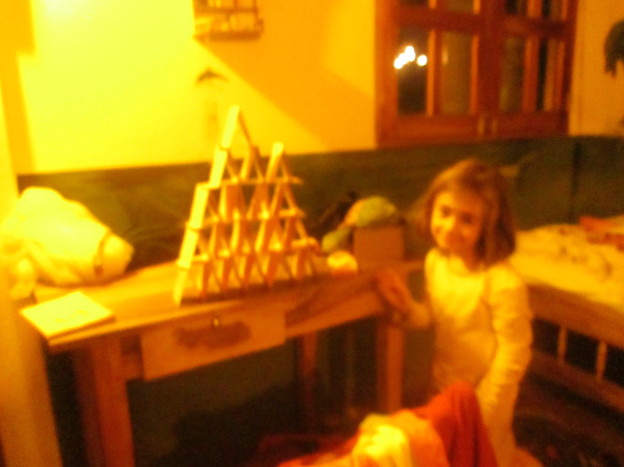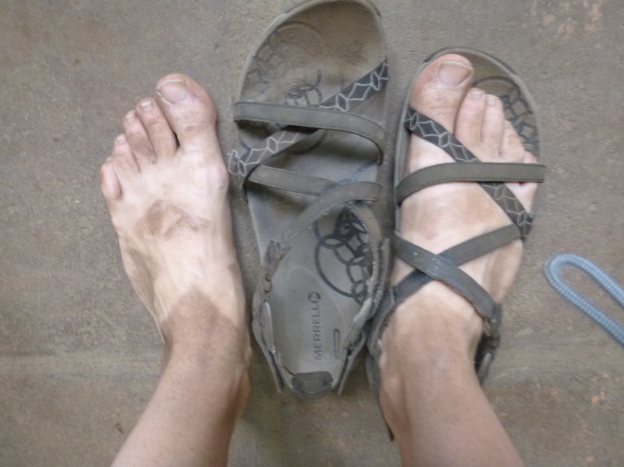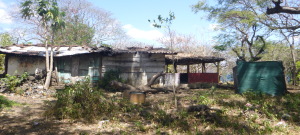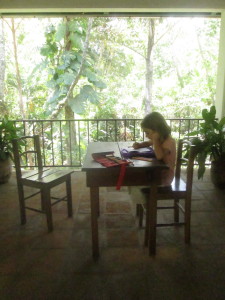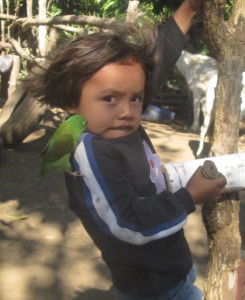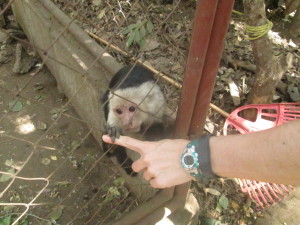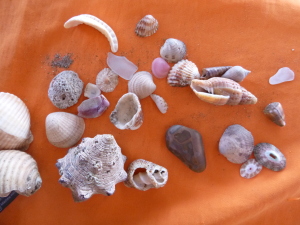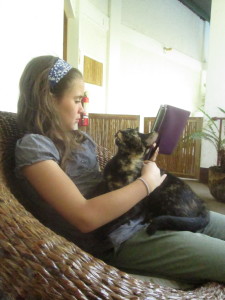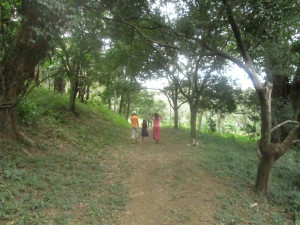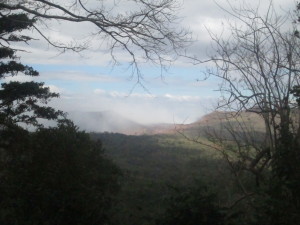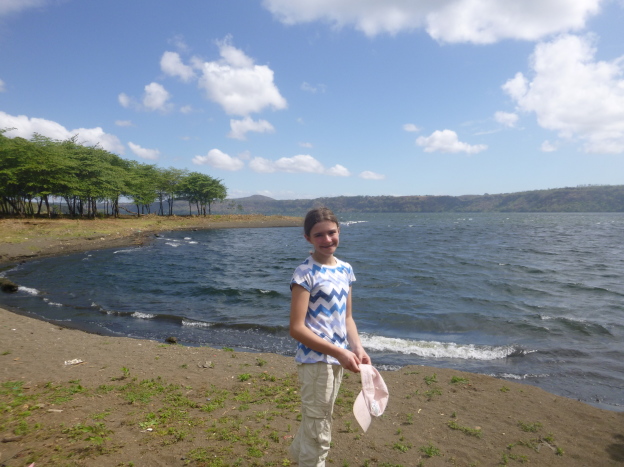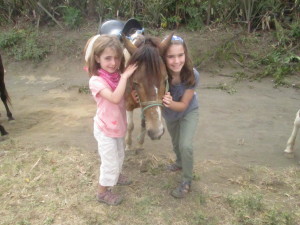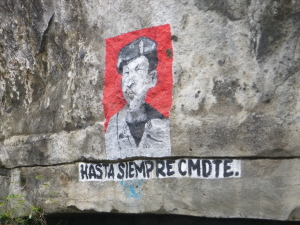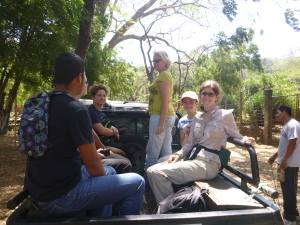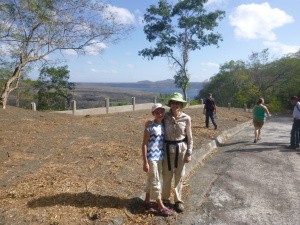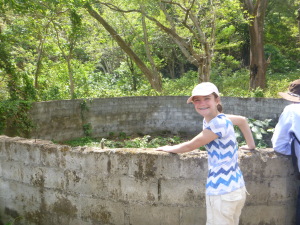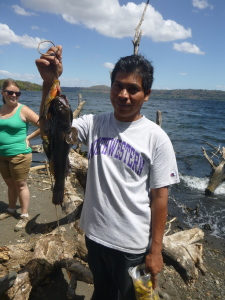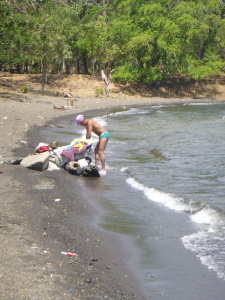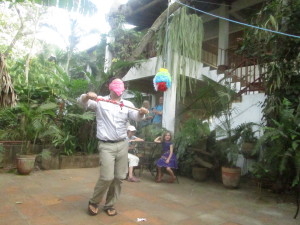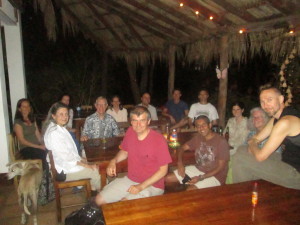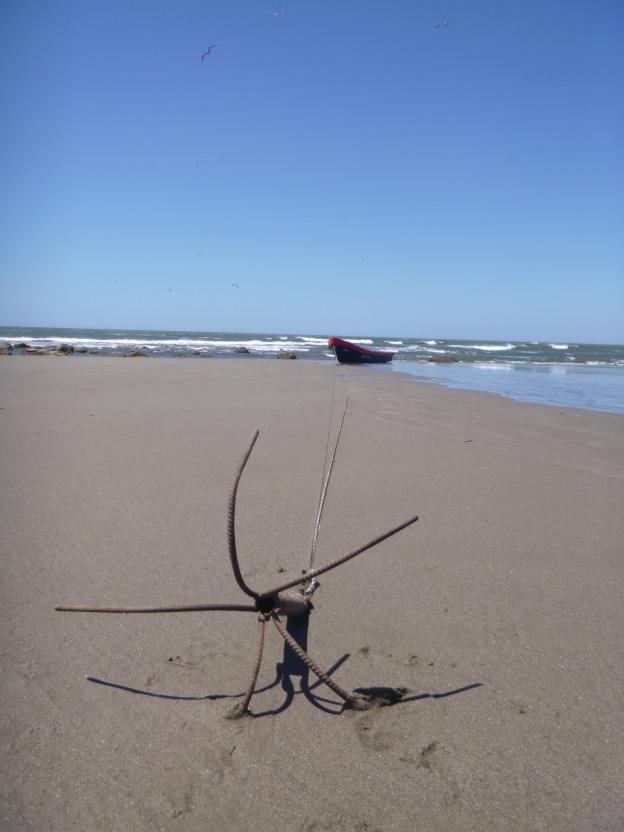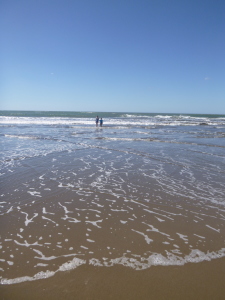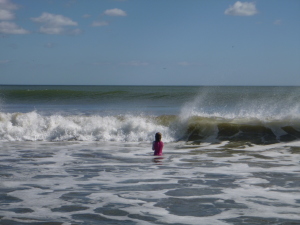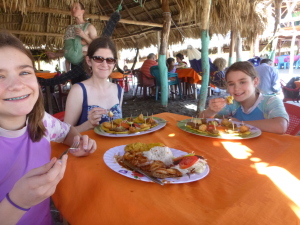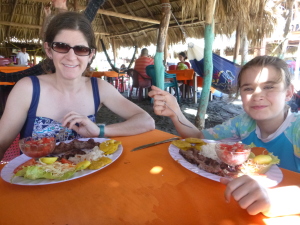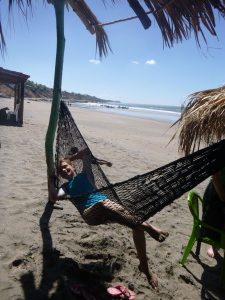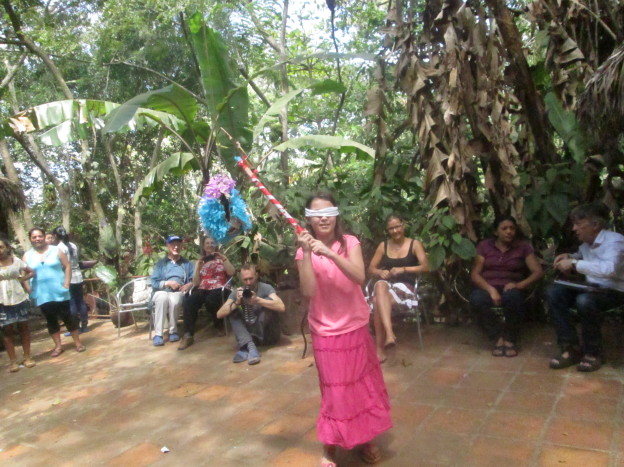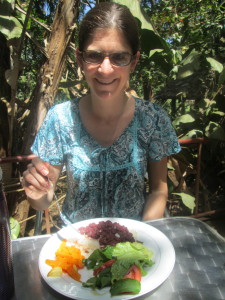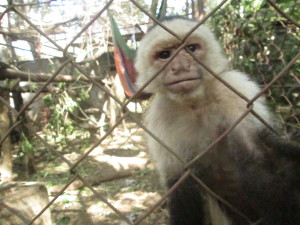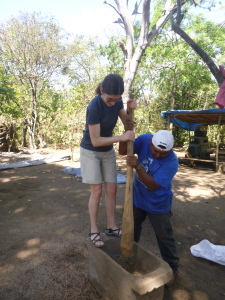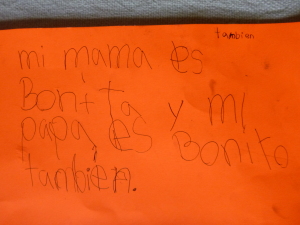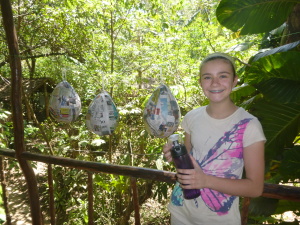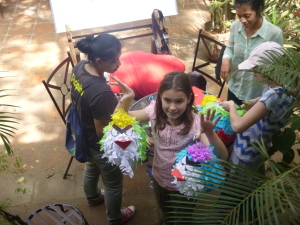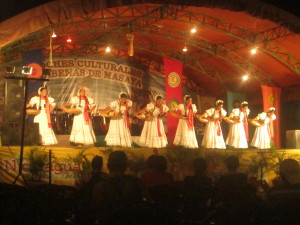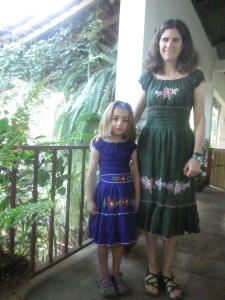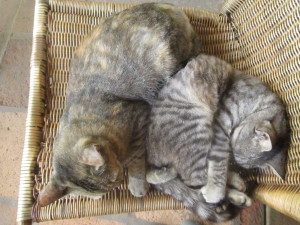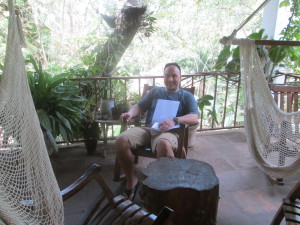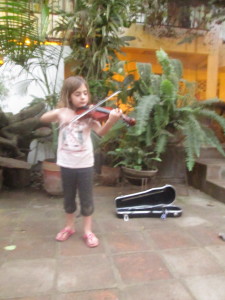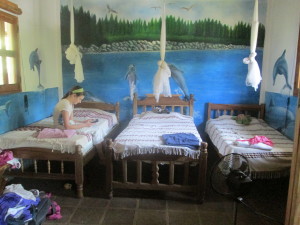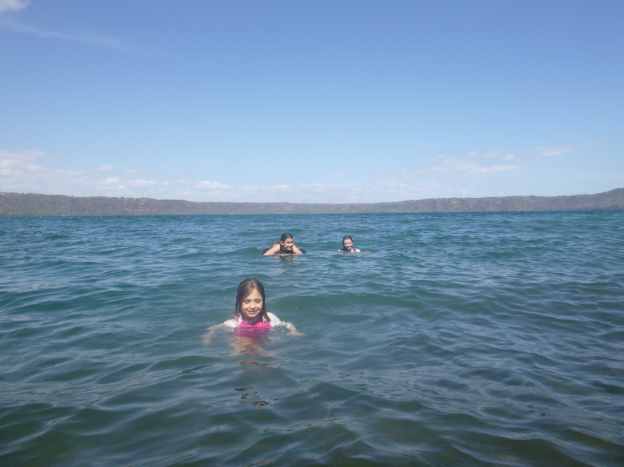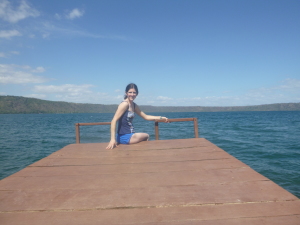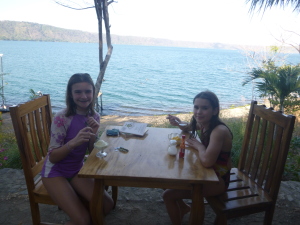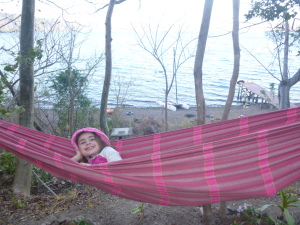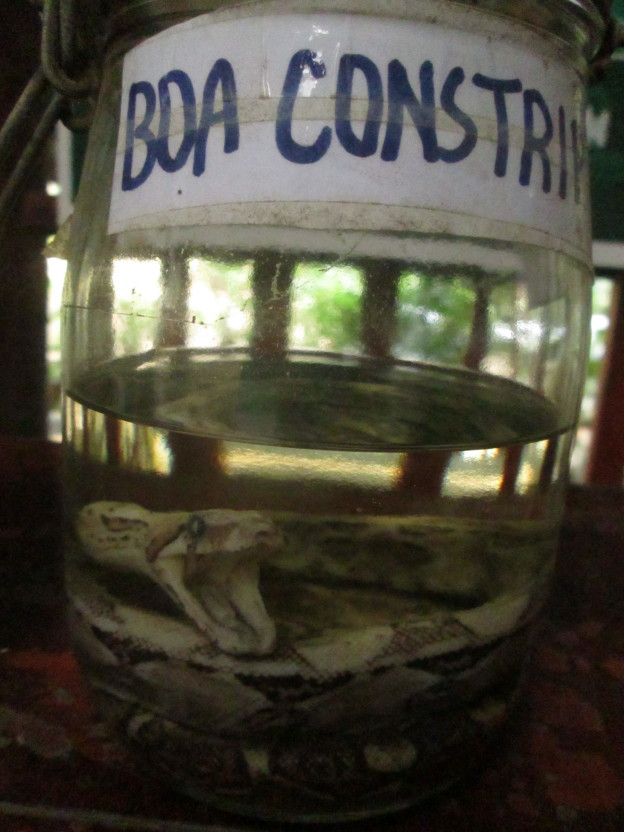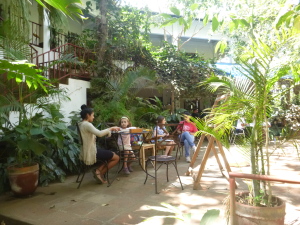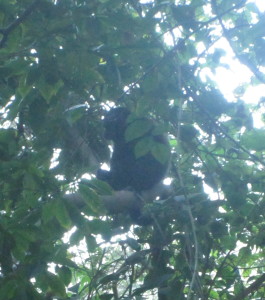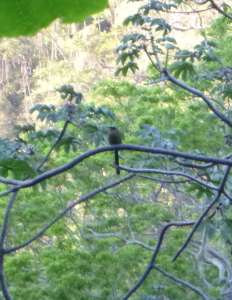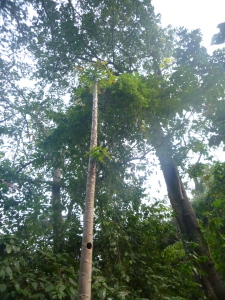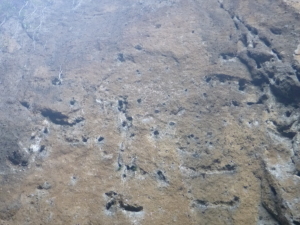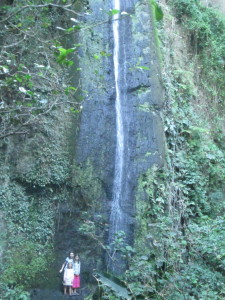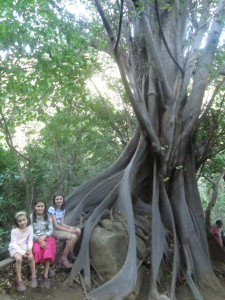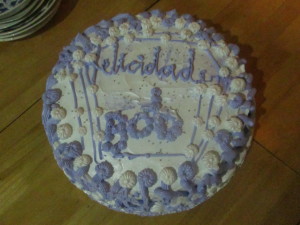We’ve said our farewells to Leon. Here are a few more photos of our time there:
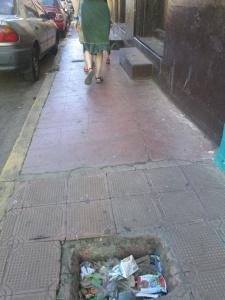
Huge hole in the sidewalk. These were everywhere and presumably designed to cripple unwary tourists.
It was a lovely city and a good stop, but a day or so there proved to be enough to cover the attractions that we thought would be family-friendly. (Although, in the case of the Museum of Myths and Legends, we proved to be somewhat mistaken in this view. All I can say is that it was probably the most bizarre tourist attraction I’ve ever visited (even including a museum that I once found myself in somewhere in Eastern Europe that had, if memory serves, various potatoes in the shapes of famous people). The museum was originally intended to showcase the myths and legends of Nicaragua, via various plastic and paper-mache figures set in rather corny displays — but is located in an old prison that was used by the Somoza dictatorship prior to the Sandinista revolution. So the cheesy-looking figures are juxtaposed with murals and sculptures depicting prison scenes and people being tortured. Also, the “myths and legends” seemed to uniformly involve people being killed/committing suicide and then coming back as ghosts. Our guide spoke English, for better or for worse, but seemed much one of those toys where you pull a string on a talking doll: he launched into a well-rehearsed spiel in front of each exhibit, not pausing for breath until the speech was completed (or the string ran out). Bob was sufficiently traumatized that he refuses to discuss the place, and we were surprised that Lanie wasn’t up with nightmares. You can tell the depth of Bob’s feelings based on the fact that his favorite part was at the end where we got to walk along the top of the prison’s walls, with dizzying drops on each side and extremely inadequate hand rails.)
Our hotel was genuinely lovely, though, with our room looking out on a beautiful walled courtyard filled with winding paths and greenery — a quiet retreat in the middle of the city. We suffered a bit from the lack of air conditioning, though. Now that we’ve left the mountains for the coast, it’s HOT here. (Note to northeastern friends: No, no, we are not complaining!)
We had lots of interesting converations with the owner, who’s from Queens. He built the hotel himself and spends most of his days volunteering in the poorest neighborhoods, building homes and sporting fields and providing food. He raised two kids in Long Island and is now raising two down here with his Nicaraguan wife, so he’s got a very interesting perspective on the two societies. He feels that his US kids learned more in school, but his kids down here have learned to be kinder and happier.
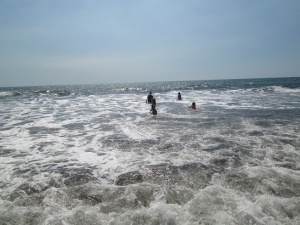 Today we were planning to hit the buses again, but were a bit daunted when we discovered what getting to our next destination would involve: a taxi to the bus station, a bus ride to Chinandega, a taxi ride to a different bus station (all the small towns here have this maddening habit of having multiple bus terminals scattered through the city), and then another bus ride to our hostel. When I read online that our hostel offered shuttle service for $40, we quickly opted to try to set that up (despite the 4-person maximum). Luckily we were able to work it out, so we got door-to-door taxi service from a very nice man, Lanie perched on my lap in the back seat and our many bags totally filling the hatchback. The ride seemed like it was going to be much shorter than we’d expected — until we got to the last 7 km and turned off onto an extremely rutted dirt road. Half an hour later, we finally arrived. Best $40 we’ve ever spent.
Today we were planning to hit the buses again, but were a bit daunted when we discovered what getting to our next destination would involve: a taxi to the bus station, a bus ride to Chinandega, a taxi ride to a different bus station (all the small towns here have this maddening habit of having multiple bus terminals scattered through the city), and then another bus ride to our hostel. When I read online that our hostel offered shuttle service for $40, we quickly opted to try to set that up (despite the 4-person maximum). Luckily we were able to work it out, so we got door-to-door taxi service from a very nice man, Lanie perched on my lap in the back seat and our many bags totally filling the hatchback. The ride seemed like it was going to be much shorter than we’d expected — until we got to the last 7 km and turned off onto an extremely rutted dirt road. Half an hour later, we finally arrived. Best $40 we’ve ever spent.
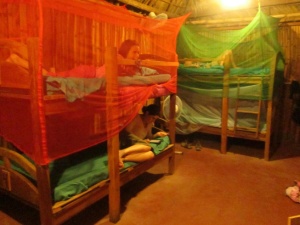 And now we’re ensconced at the Rancho Esperanza, right on the beach in the remote northwestern corner of Nicaragua. It’s essentially a collection of rough thatched-roof shacks on the sand with a hippie/surfer vibe. We rented out a six-person dorm (three sets of bunk beds). We have composting toilets and cold showers, and are surrounded by college-aged people. (One group is currently playing a drinking game the next table over, and another is sitting outside playing the guitar and singing). The beach is beautiful and mostly deserted, and the water is like a bath. We swam for hours today, then lounged in beachfront hammocks with our books, watching a breathtaking sunset. Bob and I signed up for the delicious vegetarian curry dinner, and the kids were thrilled with the “breakfast all day” menu item of waffles (Eggo, by the looks of it) and fruit.
And now we’re ensconced at the Rancho Esperanza, right on the beach in the remote northwestern corner of Nicaragua. It’s essentially a collection of rough thatched-roof shacks on the sand with a hippie/surfer vibe. We rented out a six-person dorm (three sets of bunk beds). We have composting toilets and cold showers, and are surrounded by college-aged people. (One group is currently playing a drinking game the next table over, and another is sitting outside playing the guitar and singing). The beach is beautiful and mostly deserted, and the water is like a bath. We swam for hours today, then lounged in beachfront hammocks with our books, watching a breathtaking sunset. Bob and I signed up for the delicious vegetarian curry dinner, and the kids were thrilled with the “breakfast all day” menu item of waffles (Eggo, by the looks of it) and fruit.
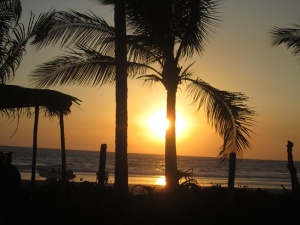 We’re here for five days and it looks like we’ll have plenty to do — surfing lessons, “climb a coconut tree” lessons, kayaking in the adjacent wetland reserve, getting a $2 manicure or $10 massage, maybe helping out in the kids’ club that they run for the local families here. So far, well worth the trip.
We’re here for five days and it looks like we’ll have plenty to do — surfing lessons, “climb a coconut tree” lessons, kayaking in the adjacent wetland reserve, getting a $2 manicure or $10 massage, maybe helping out in the kids’ club that they run for the local families here. So far, well worth the trip.
